Napropamide
Synonym(s):N,N-Diethyl-2-(1-naphthyloxy)propanamide
- CAS NO.:15299-99-7
- Empirical Formula: C17H21NO2
- Molecular Weight: 271.35
- MDL number: MFCD00055354
- EINECS: 239-333-3
- SAFETY DATA SHEET (SDS)
- Update Date: 2025-01-27 09:38:02
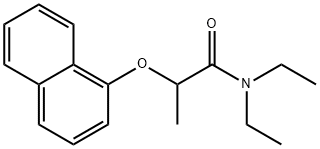
What is Napropamide?
Chemical properties
Colorless crystalline solid (pure). Technical form is tan to brown solid.
The Uses of Napropamide
Preemergence control of annual grasses and certain broad-leaved weeds in mint, orchards, small fruits, tobacco, turf, vegetable crops and ornamentals
The Uses of Napropamide
Herbicide.
The Uses of Napropamide
Napropamid is used as a pesticide.
Definition
ChEBI: N,N-diethyl-2-(naphthalen-1-yloxy)propanamide is a monocarboxylic acid amide that is propanamide substituted by two ethyl groups at the nitrogen atom and a naphthalen-1-yloxy group at position 2. It is an aromatic ether, a monocarboxylic acid amide and a member of naphthalenes.
General Description
Napropamid is a soil herbicide, which can be either sprayed on the surface or incorporated.It can be mainly used for weed control management.
Hazard
Low toxicity.
Agricultural Uses
Herbicide: A General Use Pesticide (GUP) that is compatible with many other fungicides and herbicides. Used to control broadleaf weeds and annual grasses on a variety of crops including vegetables, fruit trees, fruit bushes, oil seed rape, vines, sunflowers, olives, tobacco and mint.
Trade name
COLZOR TRIO® (dimethachlor + napropamide + clomazone); DEVRINOL®; NAPROGUARD®; WAYLAY®; R-7165®
Potential Exposure
A amide/alkanamide general use pesticide and herbicide that is compatible with many other fungicides and herbicides. Used to control broadleaf weeds and annual grasses on a variety of crops including vegetables, fruit trees; fruit bushes, oil seed rape, vines, sunflowers, olives, tobacco, and mint.
Environmental Fate
Soil. Degrades slowly in soil to 1-naphthol, 1,4-naphthoquinone, 2-(a-naphthoxy)-Nethylpropionamide
and 2-(a-naphthoxy)propionamide (Hartley and Kidd, 1987). In moist
loam or sandy-loam soils at 70–90°C, the half-life was 8–12 weeks. However, the persistence
may be as long as 9 months under conditions where microbial growth is limited
(Ashton and Monaco, 1991). Gerstl and Yaron (1983a) reported that the half-life of
napropamide in soil can range from 34 to 201 days depending upon the organic matter
content, soil texture, soil moisture content and analytical method.
Plant. Rapidly metabolized in tomatoes and several fruit trees forming the watersoluble
hexose conjugates of 4-hydroxynapropamide (Humburg et al., 1989; Ashton and
Monaco, 1991).
Photolytic. Napropamide decomposes under UV light. Under laboratory conditions,
irradiation of an aerated aqueous solution with UV light gave 2-hydroxypropananilide, 2-
propenanilide and pyruvinanilide as the major products. Minor photoproducts i
Shipping
UN3082 Environmentally hazardous substances, liquid, n.o.s., Hazard Class: 9; Labels: 9-Miscellaneous hazardous material, Technical Name Required
Incompatibilities
Slowly hydrolyzes in water, releasing ammonia and forming acetate salt.
Waste Disposal
Small amounts may be destroyed by alkaline hydrolysis. Admixture with alkali can be followed by soil burial. Larger quantities can be disposed of by incineration in admixture with acetone or xylene and using effluent gas scrubbing.
Properties of Napropamide
| Melting point: | 73-78 °C (lit.) |
| Boiling point: | 414.44°C (rough estimate) |
| Density | 1.0288 (rough estimate) |
| refractive index | 1.5675 (estimate) |
| storage temp. | Sealed in dry,Room Temperature |
| solubility | Chloroform (Slightly), Methanol (Sparingly) |
| form | Solid |
| pka | -0.82±0.70(Predicted) |
| color | Brown |
| Water Solubility | 73mg/L(20 ºC) |
| Merck | 13,6442 |
| BRN | 6809160 |
| CAS DataBase Reference | 15299-99-7(CAS DataBase Reference) |
| NIST Chemistry Reference | Napropamide(15299-99-7) |
| EPA Substance Registry System | Napropamide (15299-99-7) |
Safety information for Napropamide
| Signal word | Warning |
| Pictogram(s) |
 Exclamation Mark Irritant GHS07 |
| GHS Hazard Statements |
H302:Acute toxicity,oral H315:Skin corrosion/irritation H319:Serious eye damage/eye irritation H335:Specific target organ toxicity, single exposure;Respiratory tract irritation |
| Precautionary Statement Codes |
P261:Avoid breathing dust/fume/gas/mist/vapours/spray. P305+P351+P338:IF IN EYES: Rinse cautiously with water for several minutes. Remove contact lenses, if present and easy to do. Continuerinsing. |
Computed Descriptors for Napropamide
New Products
4,4-Difluoropiperidine hydrochloride tert-butyl 9-methoxy-3-azaspiro[5.5]undecane-3-carboxylate Indole Methyl Resin N-Isopropylurea N,N-Dicyclohexylcarbodiimide(DCC) MELDRUMS ACID 5-METHYLISOXAZOLE-4-CARBOXYLIC ACID Magnessium Bis glycinate Zinc ascorbate 1-bromo-2-butyne 2-acetamidophenol 9(10H)-anthracenone Erythrosin B, 4-Piperidinopiperidine 2-((4-morpholinophenylamino) (methylthio) methylene) malononitrile 2,4-dihydroxybenzaldehyde 3-(4-morpholinophenylamino)-5-amino-1H-pyrazole-4-carbonitrile Methyl 2-methylquinoline-6-carboxylate 2,6-dichloro-4-nitropyridine 4-Bromo-2-chlorobenzonitrile 2-(benzylamino)acetic acid hydrochloride 4-(tert-Butoxycarbonylamino)but- 2-ynoic acid 3,4-dihydro-2H-benzo[b][1,4]dioxepine 1-Phenyl-1-cycloprppanecarboxylicacidRelated products of tetrahydrofuran

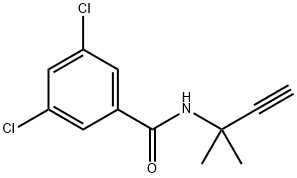
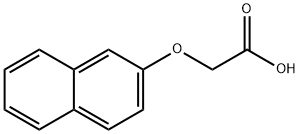

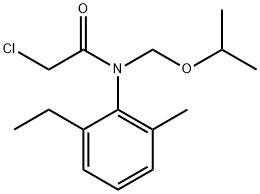
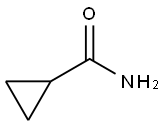
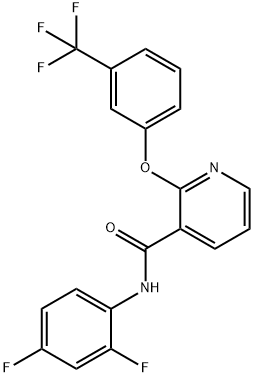

You may like
-
 Napropamide 98% (HPLC) CAS 15299-99-7View Details
Napropamide 98% (HPLC) CAS 15299-99-7View Details
15299-99-7 -
 Napropamide CAS 15299-99-7View Details
Napropamide CAS 15299-99-7View Details
15299-99-7 -
 Napropamide CAS 15299-99-7View Details
Napropamide CAS 15299-99-7View Details
15299-99-7 -
 3-(4-amino-1-oxoisoindolin-2-yl)-1-methylpiperidine-2,6-dione 98%View Details
3-(4-amino-1-oxoisoindolin-2-yl)-1-methylpiperidine-2,6-dione 98%View Details -
 20677-73-0 (2,2-diethoxyethyl)methylamine 98%View Details
20677-73-0 (2,2-diethoxyethyl)methylamine 98%View Details
20677-73-0 -
 3-(4-(hydroxyamino)-1-oxoisoindolin-2-yl)piperidine-2,6-dione 98%View Details
3-(4-(hydroxyamino)-1-oxoisoindolin-2-yl)piperidine-2,6-dione 98%View Details -
 57381-49-4 2-bromo-4-chlorobenzonitrile 98%View Details
57381-49-4 2-bromo-4-chlorobenzonitrile 98%View Details
57381-49-4 -
 4,6-dichloropyrimidine-5-carbaldehyde 98%View Details
4,6-dichloropyrimidine-5-carbaldehyde 98%View Details
5305-40-8
